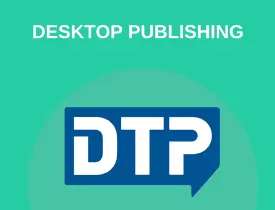Description
Course Name: Post Graduate Diploma in Computer Applications(PGDCA)
Course Id: PGDCA/Q0001.
Education Qualification: Graduate.
Duration: 370 Hrs.
PGDCA Syllabus
- Fundamental of Computer & M S Office
- Database using M S Access, My SQL
- VB.Net Programming
- DTP with Page maker, Photoshop, Coreldraw
- Financial Accounting with Tally
- Internet & Web Designing
How You will Get Diploma Certificate:
Step 1- Select your Course for Certification.
Step 2- Click on Enroll Now.
Step 3- Proceed to Enroll Now.
Step 4- Fill Your Billing Details and Proceed to Pay.
Step 5- You Will be Redirected to Payment Gateway, Pay Course and Exam Fee by Following Options.
Card(Debit/Credit), Wallet, Paytm, Net banking, UPI and Google pay.
Step 6- After Payment You will receive Study Material on your email id.
Step 7- After Completion of Course Study give Online Examination.
Step 8- After Online Examination you will get Diploma Certificate soft copy(Scan Copy) and Hard Copy(Original With Seal and Sign).
Step 9- After Certification you will receive Prospect Job Opportunities as per your Interest Area.
Online Examination Detail:
- Duration- 120 minutes.
- No. of Questions- 60. (Multiple Choice Questions).
- 10 Questions from each module, each carry 10 marks.
- Maximum Marks- 600, Passing Marks- 40%.
- There is no negative marking in this module.
| How Students will be Graded: | ||
| S.No. | Marks | Grade |
| 1 | 91-100 | O (Outstanding) |
| 2 | 81-90 | A (Excellent) |
| 3 | 71-80 | A (Very Good) |
| 4 | 61-70 | B (Good) |
| 5 | 51-60 | C (Average) |
| 6 | 41-50 | P (Pass) |
| 7 | 0-40 | F (Fail) |
Benefits of Certification:
- Government Authorized Assessment Agency Certification.
- Certificate Valid for Lifetime.
- Lifetime Verification of Certificate.
- Free Job Assistance as per your Interest Area.
Syllabus
POST GRADUATE DIPLOMA IN COMPUTER APPLICATION (PGDCA)
PGDCA – Fundamental of Computer & M S Office
Brief history of development of computer, computer system concepts, Basic component of computer, control unit, ALU, Input/output, semiconductor memory function and characteristics, Memory-RAM, ROM, EPROM, PROM and other types of memory, Capabilities and limitation, Generation of computers, Analog and Digital Hybrid Computers, General and Special of Computer, Types Of Computer –Micro, Mini, Mainframe, Supercomputers. MS OFFICE: Introduction to MS Office, MS Word, MS Excel, MS PowerPoint, Internet and Email, MS Word- Introduction to MS Word, Text Basic, Text Formatting and Saving File, Working With Object, Header and Footers, Working with bullets and Numbered lists, Table, Styles and Contents, Merging Documents, Sharing and Maintaining Document, Printing, Proofing the document, Introduction to Excel, Formatting excel workbook, Perform Calculation With Function, Short and Filter data with excel, Use Macros to Automate Tasks.
MS PowerPoint: Setting up PowerPoint Environment- New, Open, Close, Save, Save As, Cut, Copy, Paste, Creating Slides, Hyperlinks and Action Button, Slide Show Option, Using Slide Master, Using Smart Art and Table, What Is Internet?, Email Addressing, Email Attachments, Browsing, Download Video And Music.
PGDCA – Database Using MS Access, MySQL
Introduction To database concept, need of database, Flat Database, Database Management System, Characteristics of DBMS, Relational Database, Entity and Referential Integrity, Database concept of Primary Key, Database Application Example, Banking, Railways, School, Retail Store. Database Element- Tables, Query, Form, Report, and Introduction to client Server Paradigm. MySQL Database, Its Features, Installation on Windows, Making it works on Command Line, Using the Built in Database, Running and Shutting down MySql Server, Setting up MySql User account. CREATE and DROP database, Important Administrative MySql database Commands- SHOW DATABASE, USE DATABASE, SHOW TABLES, SHOW COLUMN, and SHOW INDEX.
Tables in Database, Create a Table in MS Access- Data Types, Field Properties, Fields: name, types, properties- default values, format, caption, validation rules Data Entry, Add record delete record and edit text, sort, find/replace, filter/select, rearrange columns, freeze columns. Edit a Tables- copy, delete, import, modify table structure, find, replace.
PGDCA – VB.Net Programming
Object Oriented Programming Language – Object Oriented Programming Concepts, Object Oriented Programming Compared to Traditional Programming Objects, Messages, Methods and Classes. Control Structure, Inheritance and Polymorphism, Advantages, Usage. Program development environment, Introduction to .NET, .NET Framework feature and architecture, CLR, Common Type System, MSIL, Introduction to Visual Studio, Visual BASIC, Visual Development and event drive Programming, Methods and Events, Variables, Data Type of Variables, Classes and Objects, simple project in VB.NET, constructor, Inheritance, Access Specifiers, Overloading.
PGDCA – DTP with Page maker, Photoshop, Corel draw
Introduction to Desk Top Publishing (DTP), Photocomposing Machines and DTP, Definition, Need and Area of Application, Use of DTP in Offset Printing and web Designing, Use of Desk Top Publishing in Publications, Importance of D.T.P in Publication, Advantages of D.T.P in Publication, Page Layout and Designing in a single Page Production . Laser printers – Use, Types, Advantage of laser printer in publication, Introduction to Adobe Page Maker 7.0, Aldus and Adobe Page Maker, Previous and Current version of Page Maker, Page Maker as a DTP Software, Difference between a Page Maker and Word Processing Software. Introduction to Adobe Photoshop, Photoshop Document, Various Graphics Files and Extensions- JPG, GIF, PNG, TIF, BMP, PSD, CDR, SVG etc, Photoshop- Introduction to PSD Files, screen and work area Interfaces: Menu Bar, Option Bar, Palette, Active Images Area, Tool Box List.
Introduction to CorelDraw, Creating Basic Object, Starting CorelDraw, Manipulating Objects, Formatting Objects, Manipulating text, printing, Shaping Object, Layers, Creating Templates, Advance Enhancement, Content and Graphics, Marketing Plan, Scanning, Printing Technology.
PGDCA – Financial Accounting with Tally
Basic Concepts of Accountings, Financial Statements, Financial Statement Analysis, Cost Centre, Basic Concepts of Inventory, Tally, Configuration and INI setup, Data Directory and Folders Configuration, single and multiple user, Tally Screen Components, Mouse/Keyboard Convention and Key, Combinations, Switching Between Screen Areas, Quitting. Tally Maintaining Company Data, Basic Company Details – create/Alter/select/Load/close a company, Chart of Account, Company Features, and Configuration.
Cheque Printing, Common Printing Option, Different Printing Formats, Multi-Account Printing, Dynamic- Report specific Option, Creating Group Company, Use of Tally vault, Using Security Control and defining different security levels, Use of Tally Audit.
PGDCA – Internet and Web Designing
Introduction to Internet – internet Evolution and Concepts, Internet vs Intranet, Growth of Internet, Internet Service Provider and Its Function, Connectivity – Dialup, Leased Line, VSAT, URLs, portals, Internet Services, Application. HTML – Concepts of Hypertext, Versions of HTML, Elements of HTML, Syntax, Tags and Attributes, Head and Body Sections, Building, HTML Documents, Inserting Texts, Images, Hyperlink, Backgrounds and color controls Different HTML Tags, Table Layout and Presentation, Creating Lists, Use of Font Size and Attributes, Lists Type and Its Tags.
Introduction to WYSIWG HTML editor, advantages of using HTML editors, creating a new page and site, Inserting and formatting text, Creating and Inserting Images. Word Press – What is Word Press, Installation, Login, Overview of admin panel, user profile, Word Press Themes, Themes depository, Create and Add New Logo, set up a static homepage?







